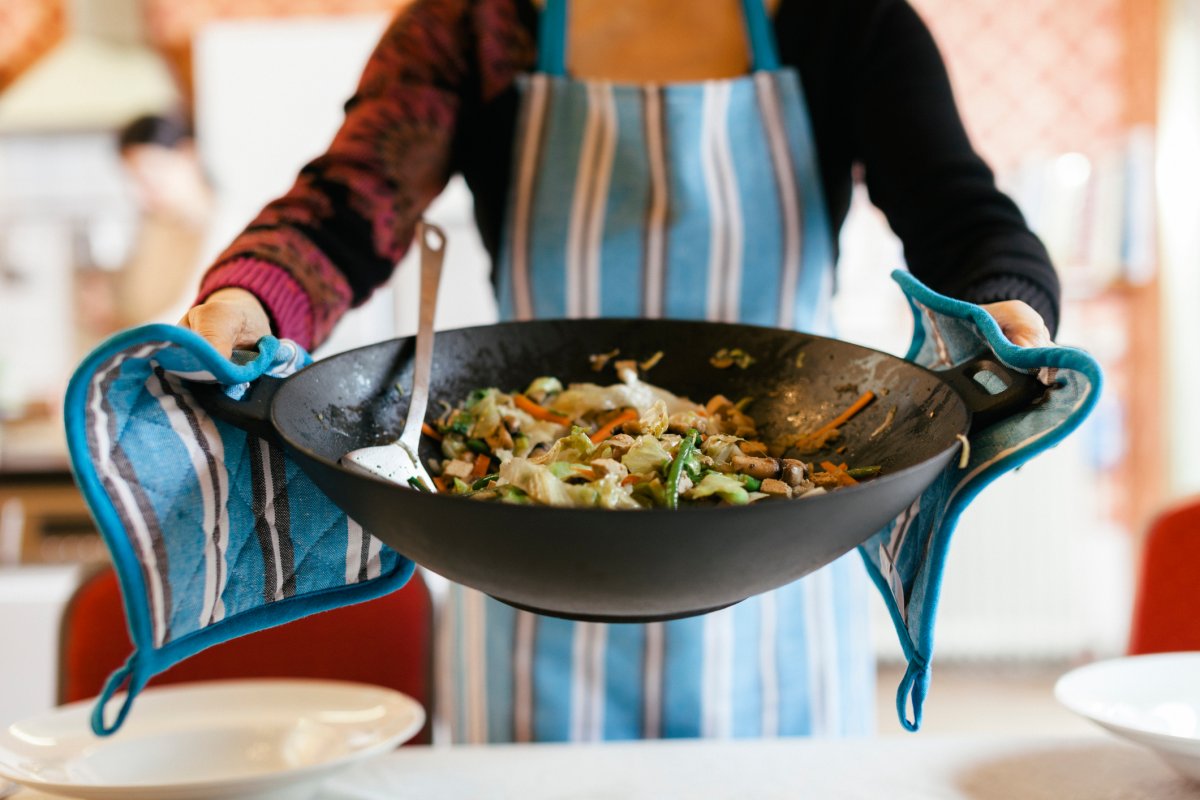Healthy eating, like many things, doesn’t have to be an all-or-nothing enterprise.

You don’t have to dive head-first into keto or immediately jettison everything with added sugar, just because you made a New Year’s resolution to eat healthier, experts say.
That may actually be counter-productive, says registered dietitian Andrea D’Ambrosio.
“Remember that any valiant effort to lose weight that involves deprivation and/or extreme exercise is unsustainable — you will eventually default to your old habits,” D’Ambrosio said.
“Therefore, make a commitment to focus on life-long behaviour change using strategies that are healthy, enjoyable and therefore sustainable.”
Nadine Moukheiber, a registered dietitian in Montreal, said that diets can be appealing. “We tend to want results very fast,” she said.
“And the more rules we have to follow, the more we think things are going to work out.”
She agrees that rule-based diets are hard to keep up, though.
“It’s never long-term results,” she said. “It’s always short-term results and you can never escape the cycle.”
If you’re looking to eat healthier, here are a few simple things you can do that don’t involve an extreme diet.
1. Figure out the problem
Moukheiber says it’s important to know what you’re trying to fix. If you’re a person who doesn’t eat very much sugar at all, adopting a paleo diet that doesn’t allow you to eat sweets won’t make much of a difference in your life, she said.
“I would just first of all get to the root of the problem and see what the main obstacles are,” she says.
Then, you can look at the cause. If you decide that you spend too much time mindlessly snacking, maybe it’s because your meals aren’t filling enough, or you need more nutritionally-balanced snacks around, she suggests.
“Decide how you want to feel,” says registered dietitian Sarah Remmer.

Get weekly health news
“Are you worried about your heart health? Are you concerned about your weight? Do you fall short on veggies in your diet? Is your energy low?
“Decide what is troubling you, and how you want to feel better before making any changes.”
2. Start small
“Make one or two changes to your daily routine and see how that goes,” Remmer says. “If it’s doable and sustainable, try adding another change and see how that feels.”
It’s about building new habits, Moukheiber says. “If the habit you are building is customized to you, to your lifestyle, to how you feel and to your reality, it will be easy for you to repeat it and to make it a habit.”

3. Cook more at home
“We have become increasingly dependent upon processed, convenience and restaurant meals,” D’Ambrosio says, and our taste buds can come to crave these high-fat, high-salt foods.
Cooking more often can often improve your dietary quality and decrease your reliance upon these foods, she says.
“Your waistline and wallet will thank you for it!”
4. Add some fibre
D’Ambrosio says many of her clients feel “full and energized” after a high-fibre meal or snack. “Remember that fibre fills us up on few calories. It slows digestion, lowers cholesterol and stabilizes blood sugars,” she says.
High-fibre diets have been linked to a range of health benefits, including protecting against disease.
D’Ambrosio recommends choosing whole grains, and suggests adding chia seeds to things like cereal or yogurt to boost their fibre content.

5. Use smaller plates
Using smaller plates at meal time is an easy thing to do that can bring big benefits, Remmer says. “This will help to control portion sizes so that you can be a more mindful eater.”
She also recommends making sure that half your plate is covered in fruits or veggies — something also recommended by the Canada Food Guide.

6. Know what you can’t live without
For Moukheiber, this is chocolate. “If I don’t eat my chocolate during the day, don’t stand next to me,” she says.
Replacing all her snacks with healthy alternatives just won’t work for her, she says. “I’m not going to be happy with carrots and hummus.”
“If you love having a glass of wine with dinner and it brings you joy, maybe that’s not what you should give up,” Remmer says.
“On the other hand, if you tend to mindlessly snack on unhealthy snack foods just because they’re laying around, that’s something you can probably give up.
“Give up things that you won’t miss. Feeling deprived will only mean that you’ll end up eating more of it later.”






Comments